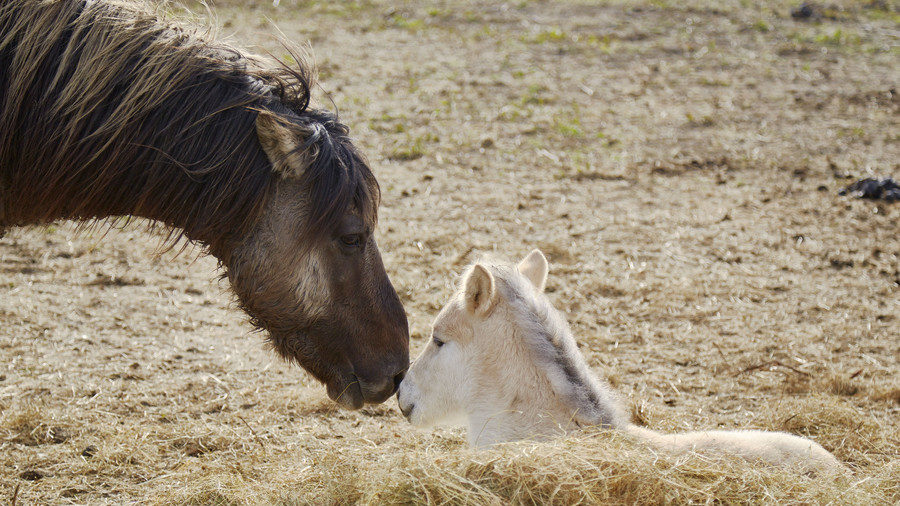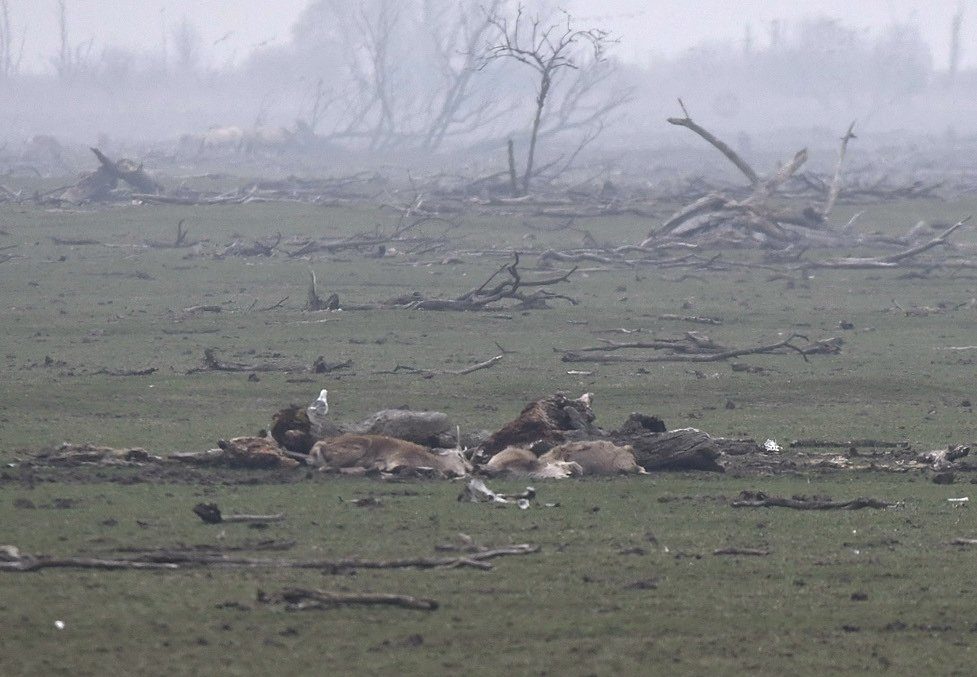The dire situation has plagued the Oostvaardersplassen nature reserve, located in central Netherlands on the banks of Markermeer lake. Due to the lack of food and harsh weather, the population of grazing animals on the reserve plummeted by some 60 percent this winter. Thousands of starving grazing animals are packed in a barren-looking area of the reserve, unable to get out to graze somewhere else.
The lake used to be a part of the Zuiderzee, a saltwater inlet of the North Sea. The water bodies were cut off from the sea with dykes during the 20th century, while the nature reserve itself is located below the sea level at a dried-off area.

The animals were being provided with additional hay during winter time, but that quantity was not enough to keep them going, as the population of animals dropped by some 60 percent during the cold season. While the administration prefers to keep things "natural" in the reserve, the majority of animals perished due to quite unnatural causes.
The population on the reserve had grown to more than 5,200 animals as of last October, following a string of quite mild winters. The 2017-18 winter season, however, turned out to be quite harsh, concluding with a week of freezing temperatures at the beginning of March.
In total, 3,226 animals, primarily red deer, perished in the reserve since the beginning of December, with the grazers' population dropping to 2002 levels, according to official statistics. 2,877 animals were shot and killed by the park's rangers, as they were deemed too weak and malnourished to make it through the winter and killing them would have spared them from further suffering.
Bird sanctuary turned into 'death field' for large animals
The reserve, initially intended to propagate wild birds, started to overgrow with shrubs and trees, hampering avian egg-laying efforts. To counter the overgrowth, as well as to "rewild" the area, the large grazers were introduced to the Oostvaardersplassen. While red deer had roamed the lowland plains for centuries, modern breeds of Konik ponies and Heck cattle were introduced to "replace" the now-extinct species - Tarpan wild horses and Aurochs respectively.
The animals were allowed to roam the fenced-off area and breed freely but, due to lack of predators and other threats, their population grew rapidly, limiting the feeding capacity of the land. While in a more natural environment the animals would be able to move to another area after mowing down all edibles in one area, in the Oostvaardersplassen they were forced instead to starve behind inside the perimeter fence.
Activists repeatedly clashed with police at the visitors' center of the Oostvaardersplassen while trying to deliver hay to the animals. The food for the grazers had been donated by local farmers.
While the activists successfully pressed the administration to extend the winter feeding period, it ended on May 5. The administration said that the need for "supplementary feeding was decreasing," since "the grass was growing rapidly." No mention was made of the fact that the majority of the animals were already dead by then.
Let nature 'fix' it?
An independent probe was launched into the Oostvaardersplassen situation, in order to evaluate how to "adjust management" of the area and fix its problems. According to the probe's findings, published late in April, the area was deemed not a complete ecosystem, which could not be managed by natural processes alone.
The large grazers' overpopulation not only led them to starvation, but ultimately damaged the primary purpose of the reserve as a bird sanctuary. The large animals have damaged the landscape, eaten off vegetation and contributed significantly to the deterioration of the reserve. Apart from some water management and landscaping measures, the commission advised that the animal population should be further reduced to a cap of 1,500 by the next winter season. It would mean killing some 1,100 animals, primarily red deer.
It remains unclear, however, if the reserve's administration will follow the advice to cull even more animals. Artificial feeding of the animals, however, definitely cannot be a solution to the Oostvaardersplassen situation, as it would eventually lead to the same overpopulation of the area.




Comment: This winter is most likely a portent of what's to come. And what's more, this is yet another example of humans thinking they know nature more than they really do, and as we can see, when they get it wrong, as they often do, the consequences can be devastating: